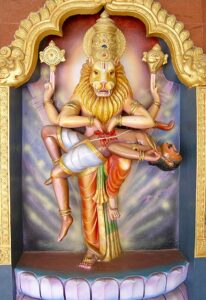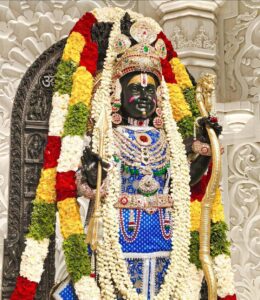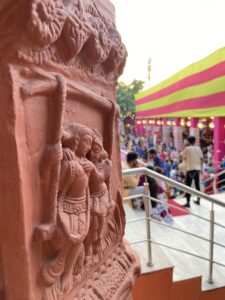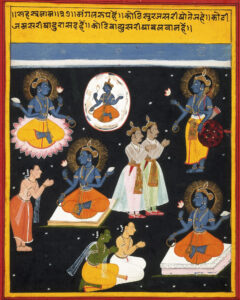INTRODUCTION
oṃ mahājvālāya vidmahe agnidevāya dhīmahi।
tanno agniḥ pracodayāt। – Agni Gayatri Mantra
All around the length and breadth of the Indian subcontinent, thousands of people are celebrating a revered religious festival, popularly known as “Holi” in the general dialect of the country. What are the reasons as well as the Primary contention with celebrating this particular festival? In this article, we shall endeavor to look into this matter in depth so that we do not believe in dogmatic values motivated by emotive lines, but rather we believe in something Prudential meaningful and ethical- and this will additionally, explain the beauty behind the Indian knowledge system and its ethical imperatives.
MAIN ASPECT
“Holi is celebrated at the end of the winter season on the last full moon day of the lunar month Phalguna (February/March).” It is believed that before the commencement of this festival, we have the winter season, we have spring season wherein people get lethargic, it disrupts the bodily equilibrium of the person and 8 to 9 days before, which is called as “Holashtak” wherein, it is believed that negative and preposterous cosmic rays enter in the sphere of earth and these rays prove to be detrimental to the body of human beings, their structure and system could be at risk of getting adversely affected by those rays that seep in deep down the surface of earth. So, playing holi, i.e. with the colors, will help in recuperating and rejuvenating from those rays and lackadaisical distortions simply because, the colors, which are chemical free, are used in this festival were made by natural flowers, and chandan which have cooling, beauty and health benefits closely associated to it. These elements, once when applied on the surface of the human body, will work as ailment against the bacterial infection, and in betterment of the physical, emotive and mental well-being of the human. “The colors were traditionally made of Neem, Kumkum, Haldi, Bilva” So, to curb this bad energy transit was to be curbed with the advent of colors in holi.
Another reason which is closely associated with the festival of holi is the “Holika-dahan”- a story which is related to Bhakta Prahlad and Holika, the sister of HiranyaKashipu. Before delving in the religious and theistic argument, let us understand the scientific explanation which is based on the premises that inside the burning stack, we use cow-dung cake and it rather helps and aids the human body to recover from various diseases and acts as ailment which can benedict the human body with its fragrance, beauty and heat. The tiredness and laziness surrounding the body of a human which is mainly activated during the seasonal transition from winter to summer, this festival gives a chance to overcome this problem as well. “Holika Dahan, on the other hand, is performed to burn all that is dry and dirty to pave the way for new life in the spring”. Another significant reason closely associated to this celebration is that which we had made a reference earlier, the story of Prahlad and Hiranyakashipu; the arrogant, ruthless father who was full of ignorance and vanity which subsumed him from head to toe made him grow jealous and drowsy because his innocent son- Prahlad was worshiper of Vishnu. Indolent king in the form of father, Hiranyakashipu went on to abnegate the life of his own son because for him, there was only one ruling authority and guiding light which he himself, he forgot his acquiescence, his origination and epistemic roots which are all connected by and nurtured with the god, vishnu himself. After meditating upon lord Brahma, the king was gifted with a boon that no human, god or animal, not in winter or summer, not in broad daylight or night, not by bombshell or axe, not inside the house nor outside of the building of his residence; no one can kill him. This ignorance grew more arrogance and anxiety to seize and destroy all that will disobey him and his powerful might which was hitherto unchallengeable, by gods and powerful humans alike- the ultimate rescuer- the lord himself came to rescue the universe from the negative clutches of the tyrant emperor in the form of half human and half animal as the epic narrates.
The reign of his tyranny could not continue any longer and he was decimated off the surface of earth. “He was neither man nor animal. He lifted the King, carried him to the lintel of the palace door and placed him on his lap. The King was neither in the palace nor outside it. Then he killed him with a single swipe of his great claws. There were no weapons. And it was dusk, neither night nor day.”

CONCLUSION
We can consciously conclude from the aforementioned story that: No matter how small, how powerful how brave or how courageous tyrant leader is, he or she hold very less water in front of the devotional preacher of the Lord, the Lord can take different forms and manifestations such as the teacher, a friend, a family supporter, the spouse or the Almighty himself. It is a day of remembering the fact that we are one with the Holy Spirit We are not beyond the boundaries or below the limits of the God, we are at par with the God- this exemplified in Yogã philosophy in the form of Atṁa and Parāmatama unity.
It suggest us that Holi is the festival to remember that the God himself came in this universe to protect, not only his devotional child, but also to protect this entire universe from the disastrous clutches of a tyrant ruler, who knew nothing but himself believed in nothing but his arrogance and and understood, nothing but his vanity. A period of reminiscing, the very fact that Which is beautifully mentioned in the Vishnu Sahasranamam: paritrāṇāya sādhūnāṁ vināśāya ca duṣkr̥tām, dharmasaṁsthāpanārthāya saṁbhavāmi yugē yugē (31). It also explains the work and the duty of a moral agent that is: ananyāściṁtayaṁtō māṁ yē janāḥ paryupāsatē, tēṣāṁ nityābhiyuktānāṁ (30)– we have to meditate upon the name of the Lord, upon the transcendental reality, which, in the words of Sadguru, is “Celebrating the exuberance of life” i.e. celebrating Holi.





















